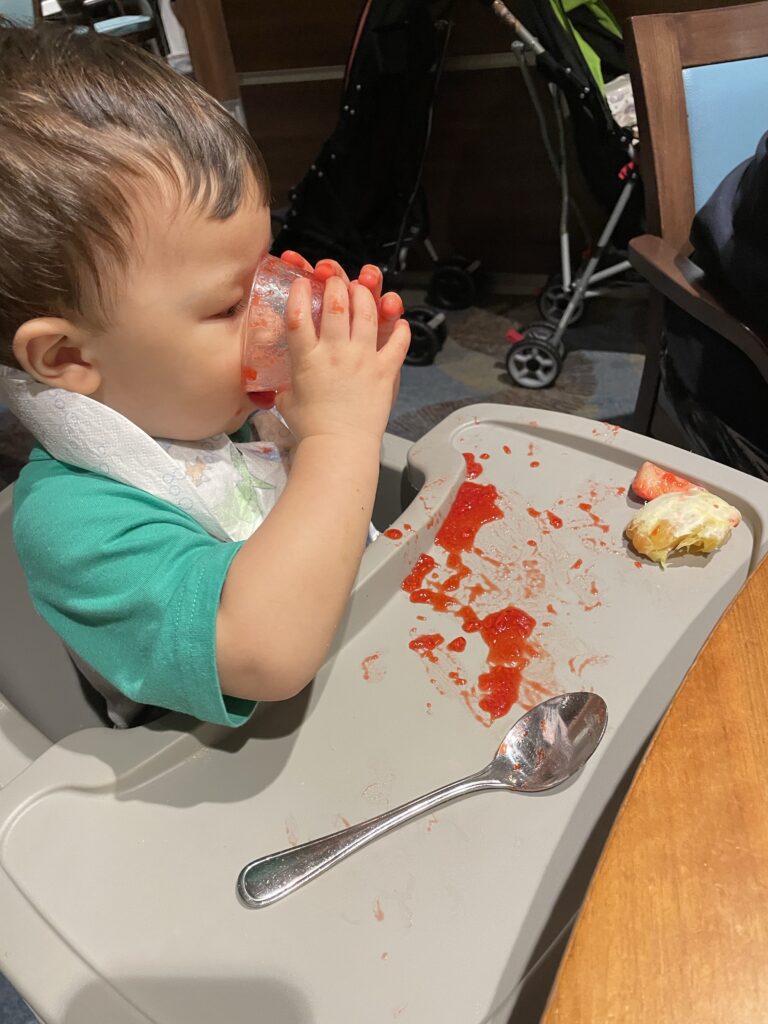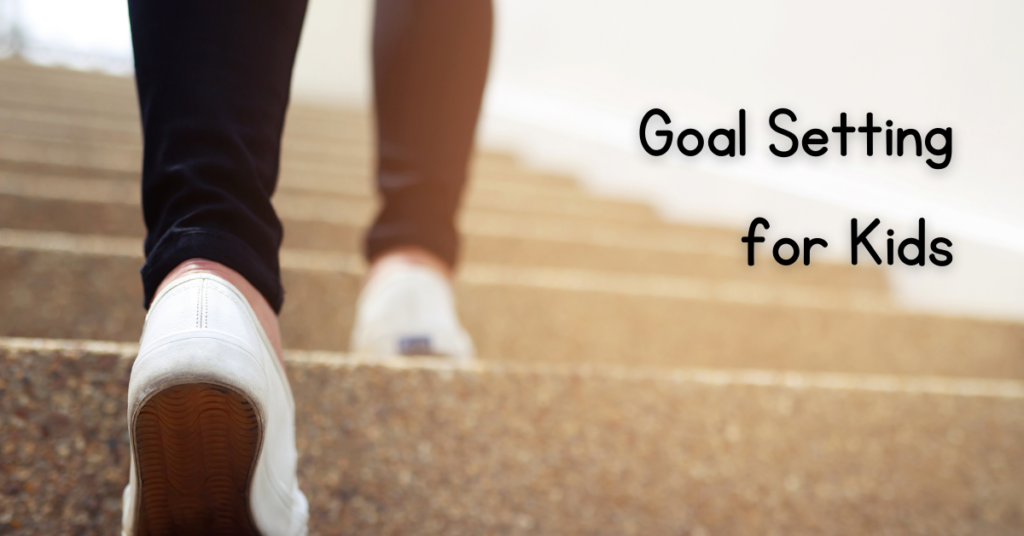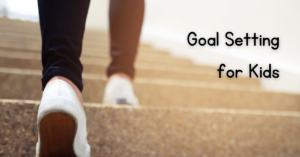Have you ever been on Facebook and seen an ad for a goal setting workshop or challenge for moms? I’ve seen a ton! They’re usually hosted by time management and productivity coaches. I’ve learned a ton from these coaches, but I realized that what they share isn’t exclusive to moms and parents. There are a ton of benefits of goal setting for kids, not least of which is being more successful at achieving goals when they become adults.
(Keep reading or scroll to the bottom for free Review and Vision worksheets!)
Different Kinds of Goal Setting for Kids
When I was a kid, I learned about the goals called resolutions, but they weren’t really something that I focused on after January first. It was normal to set a resolution for the new year to say that I did it, but then I’d start playing with my siblings or friends, go back to school (and have a ton of homework), and forget about it. If you ask me about resolutions I created as a kid, I don’t remember a single one of them.
Lent was different. Although giving something up (or adding something in) for Lent was the norm, it was a lot easier to remember to follow these goals. I think it’s because we made more of a conscious effort to remember and focus on our Lenten goals than we did on resolutions. Not only did my mom help me remember daily, but the priest would also reinforce it on Sundays at Mass. Plus, it was for “only” 40 days which felt a lot more doable than 365!
I took dance lessons, and was in the chorus and drama club in school. In these situations, we were provided with the group goals of learning the routines, songs, and plays/musicals, practicing them a ton, and being ready to perform flawlessly when it was time for our recitals, concerts, and performances. For kids that play sports, the team has a goal of learning, practicing, and winning their games. Individually, we also had goals of getting a solo, being named to the cast, or making the team.

Goal Setting is Natural
Nowadays, he’ll be playing with his toys and stop and say “yay” as he claps for himself. Even if he doesn’t realize it, he’s set a goal for himself of getting each piece where it goes, learning how to put the toy together and conquering it.
As a parent, you probably already realize this, but goal setting is completely natural. It will happen whether we foster the idea in our kids or not. Not long ago, my son would look at the staircase as something huge and he wanted to get to the top of it. Then one day, I opened the gate, stood behind him, and let him start crawling up the stairs.
When he was first learning to eat food independently, the goal was for him to get the spoon into his mouth. Then to get the spoon into his mouth WITH food on it. Now the goal is to get the spoon into his mouth with food on it WITHOUT making a humongous mess. God-willing, he’ll achieve this next goal relatively soon.
Benefits of Goal Setting for Kids
Even though we don’t always reach our goals at any age, there are many benefits of setting goals for ourselves. But the biggest benefit is that we increase the likelihood of reaching our goals by setting them and saying them out loud, writing them down, and/or sharing them with others. I know, that’s sort of obvious that you can’t reach a goal without setting it, naming it, as a goal. But more importantly is that you’ll increase the odds of reaching your goal by writing it down and sharing it with others.
For kids, goal setting teaches them to work towards something they want. And they can start small. Goals for kids can include learning to read CVC words, spell their name, write the numbers 0-9, or tie their shoes – each of these things are extremely likely to occur whether they’re set as goals or not. As they get older, kids’ goals can increase in difficulty, and decrease in likelihood of occurring naturally (such as learning to code, planning and cooking a meal from start to finish, starting a podcast, writing a children’s book).
Goal setting teaches kids how to break things down into smaller steps. You can’t expect to go from writing nothing to writing all 10 numbers. You need to follow steps of looking at numbers, becoming familiar with their shape, tracing the numbers, practicing copying them, and eventually writing them by memory. Plus, you need to learn each number individually, as well as showing them together as a group, or else they’ll become confusing.
What to do Before Setting Goals
Something super important when it comes to goal setting is taking stock of where you’re at before you finalize your goals. If your child has a goal of independently counting to 100, but they have trouble counting past 5, you might want to guide them to start with a smaller goal. Counting to 10 is an integral step in counting to 100, so that can be an intermediary goal on their path to 100.
This is the same for us as parents. If I want to set a goal of completing a specific curriculum by the end of the school year, but I haven’t been consistent in using the curriculum, it could prove difficult to achieve that goal. In this instance, I’d need to look at the time available for the rest of the school year, see how many lessons remain in the curriculum, and split the lessons up over the remainder of the year. Especially if I’ve been inconsistent, I’ll want to make sure I factor in off days and days to catch up in case things happen and we don’t complete a day here or there.
Taking stock is pretty much what doing a homeschool review is all about. You can dive as deep as you want into your review, but at minimum, you should reflect on what you’ve done, what you haven’t done, what you’ve liked, and what you haven’t liked. You can verify what progress you’ve made and see how well you’re following the standards and guidelines.
Review and Vision Worksheets
In order to ease the process of reviewing the past year, reflecting on your progress, and creating goals and a vision for the upcoming year, I’ve created some worksheets that I wanted to share with you. These worksheets are part of my monthly/weekly student planner, along with monthly review pages, but I’m sharing them with you free of charge. There are two pages to review this past year in your homeschool, and two pages to create your goals and vision for the upcoming year. I’d recommend you print up an extra copy so that you can do this exercise with your kids, then share your answers with each other. I hope you enjoy!
Thank you for joining us In Our Homeschool.
Disclosure: As an Amazon Associate I earn from qualifying purchases. This post may include affiliate links which means I may earn commissions for purchases made while using my link.





